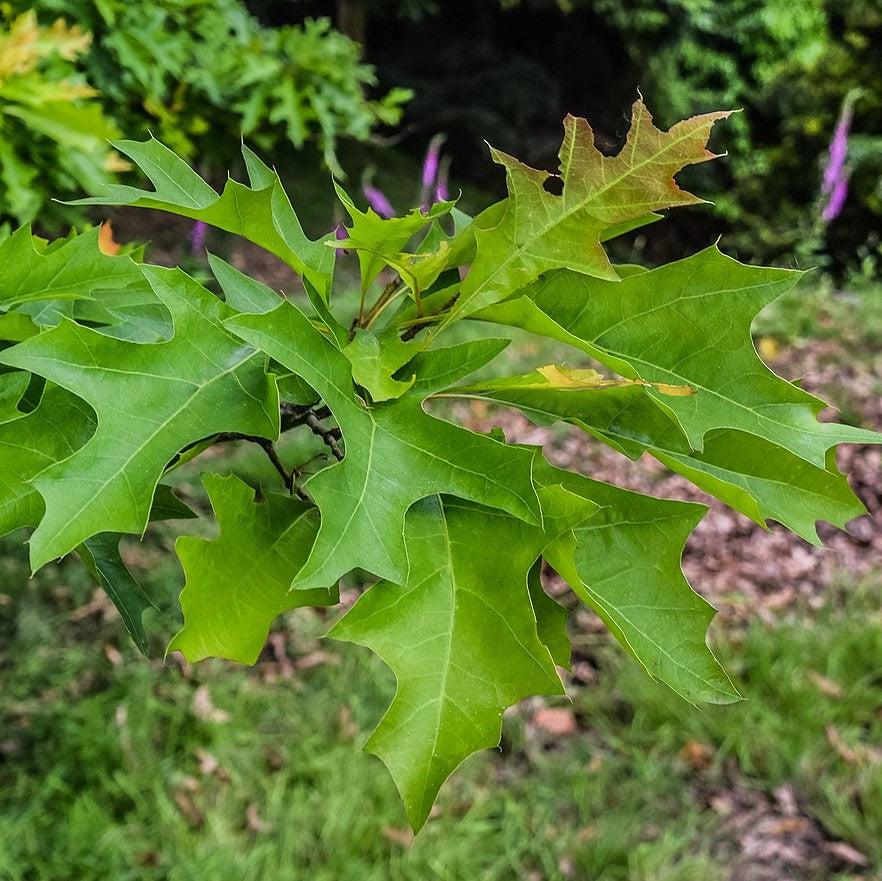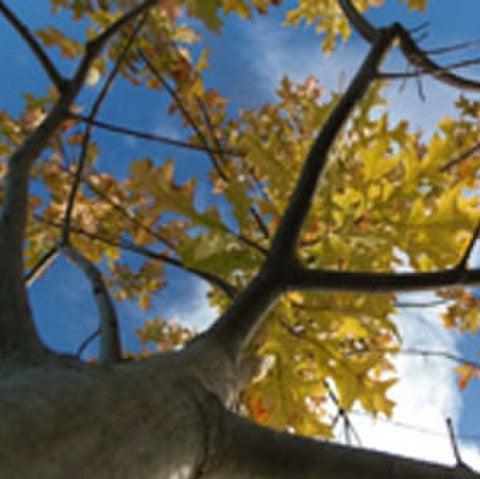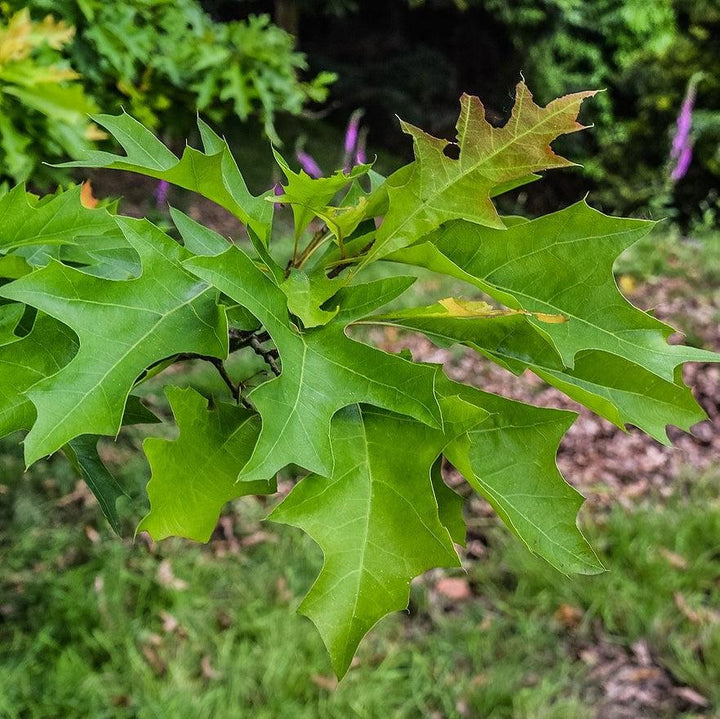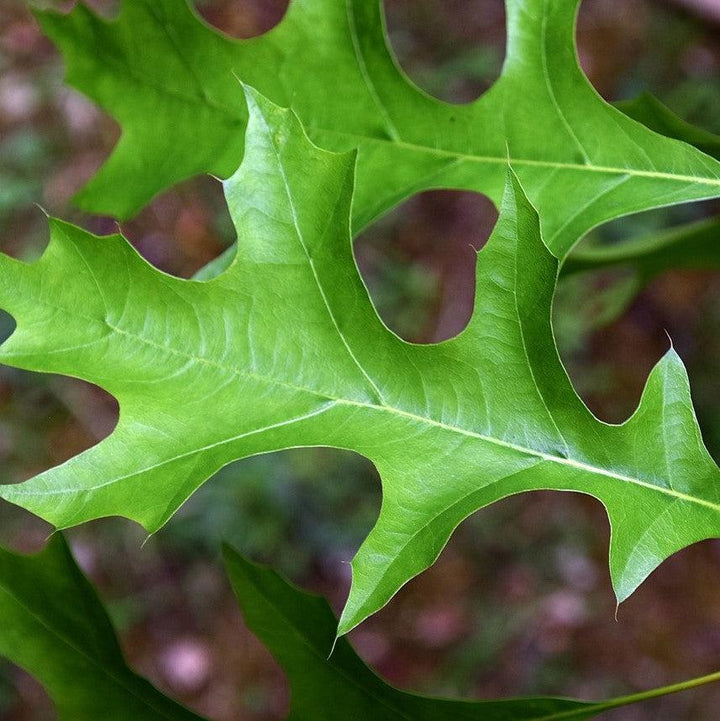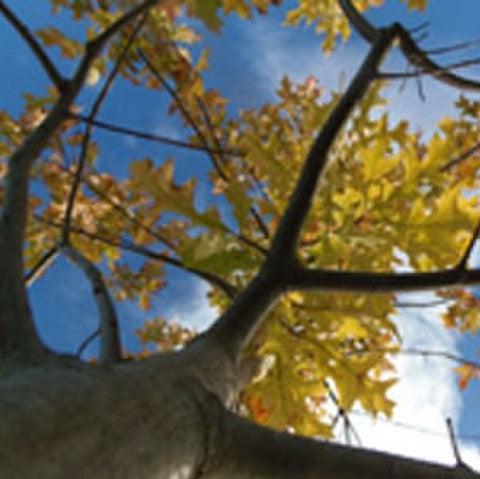Highpoint Nuttall Oak is a mid-sized native deciduous tree with a uniform habit and strong leader forming an elongated oval crown. The large, deeply lobed and toothed foliage emerges bronzy red and matures to green with light green veins before turning yellow to orange-red in fall. The acorns have scaly cups. Best grown in full sun and rich, moist, acidic well-drained soils. Tolerates wet soils.
Syn. with Quercus texana
|
Type: |
|
|
Origins: |
South Central N. America |
|
Height: |
30’ - 60’ |
|
Spread: |
20’ - 40’ |
|
Spacing: |
30’ |
|
USDA Hardiness Zone: |
6 - 9 |
|
Culture: |
|
|
Bloom Color: |
Yellow |
|
Season of Interest: |
MAINTENANCE NEEDS: Low Maintenance. Chlorosis is common in alkaline or neutral soils. Oaks are susceptible to a large number of diseases, including oak wilt, blight, root rot, anthracnose, oak leaf blister, cankers, leaf spots, and powdery mildew. Potential insect pests include scale, oak skeletonizer, leaf miner, galls, oak lace bugs, borers, caterpillars and nut weevils.
LANDSCAPE USES: Accents or Group Plantings, Borders, Woodland Gardens, Naturalized Areas, Wildlife Gardens, Privacy Screen, and Shade Tree.
COMPANION PLANTS: Magnolia, Burning Bush, Serviceberry
IMAGES: Krzysztof Golik, Quercus texana in Hackfalls Arboretum (2), CC BY-SA 4.0, (2) Krzysztof Golik, Quercus texana in Eastwoodhill Arboretum (2), CC BY-SA 4.0, (3) Orto Roma 2, Thumb Q. texana 1024wikipedia, CC BY-SA 4.0
*As plants have ranges in appearance they may not appear as the images shown


